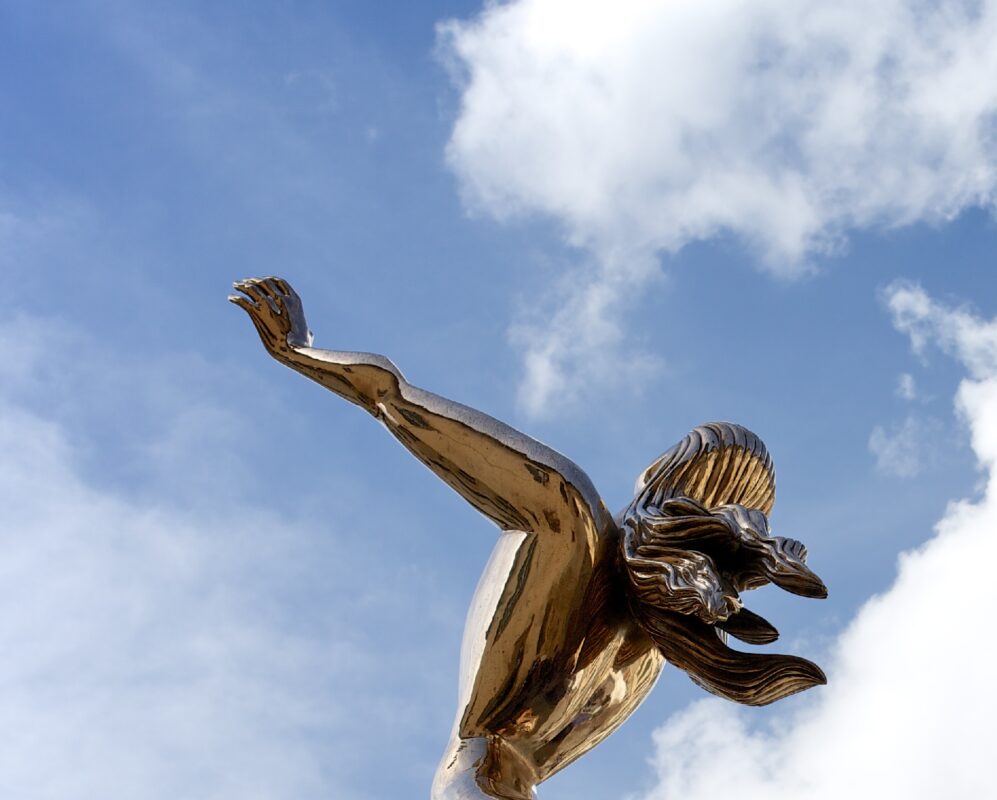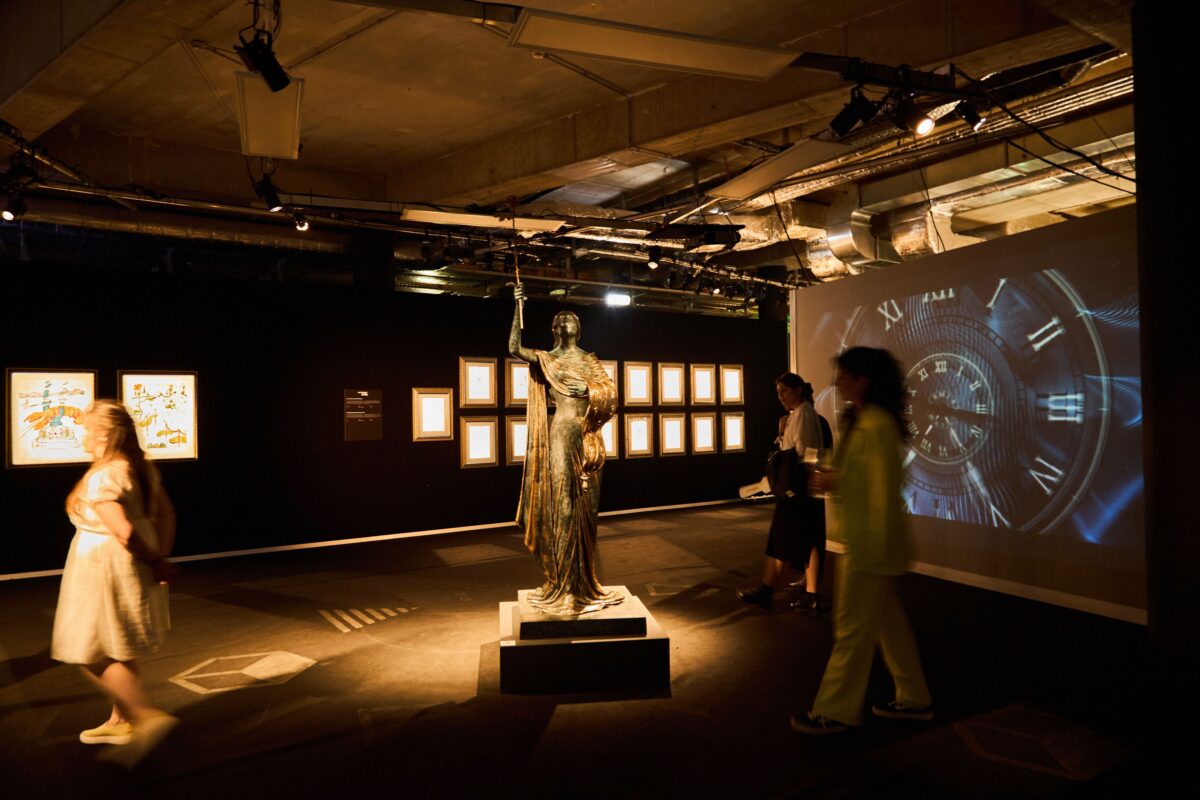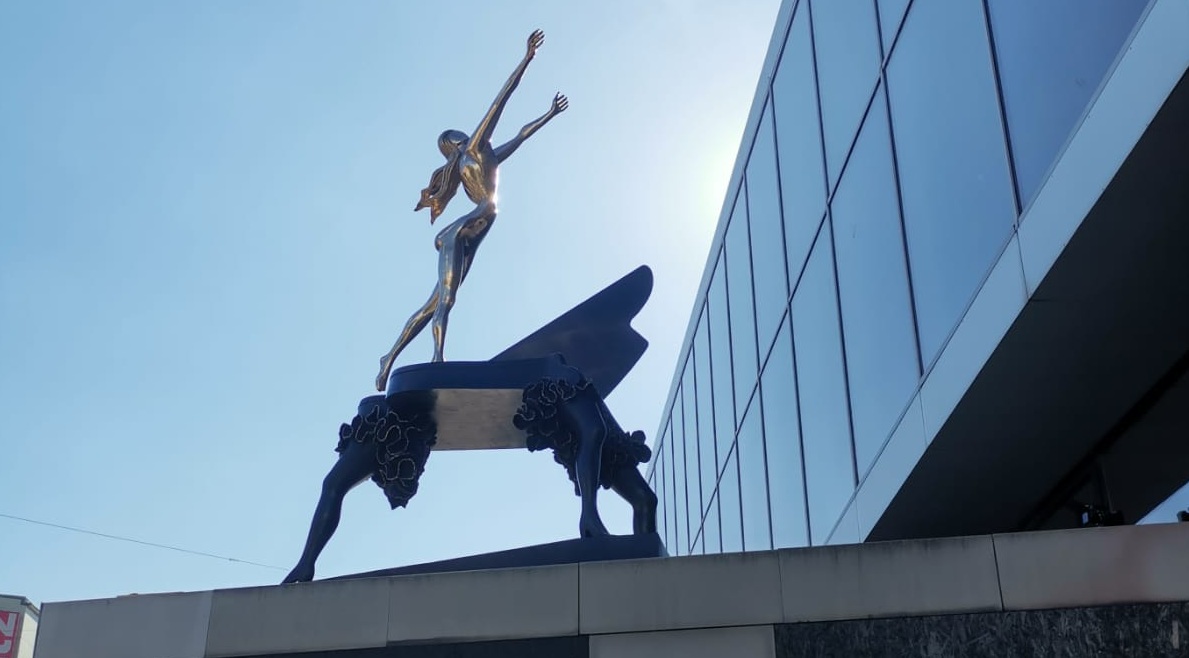“During the Surrealist period, I wanted to create an image of the inner world, the marvellous world of my father Freud.”
Salvador Dalí
Conceived by Salvador Dalí in 1954 and cast for the first time in 1984, “Surrealist Piano” is one of the most emblematic sculptures in the visionary and symbolic universe of the Master of Surrealism.
Standing nearly five meters tall, this bronze is much more than a sculpture; it is a vibrant fusion of obsessions and desires, theories and fantasies, deeply rooted in the psychoanalytic thought of Sigmund Freud.
At first glance, the Surrealist Piano appears to be a grand piano. But as is often the case in Dalí’s world, appearances are deceptive. Instead of traditional wooden legs, the instrument stands on elegant, dancing female legs adorned with frilly skirts and ankle boots, imbuing the work with a theatrical energy and dreamlike movement.
At the top of the piano, a golden ballerina strikes a graceful pose, merging music, the body, and the psyche into a single, dynamic entity.
But behind this surreal sculpture lies a much deeper story, woven from missed encounters, intellectual longing, and a fascination bordering on worship.
Dalí was profoundly captivated by Freud’s theories on the unconscious, dreams, and repressed desires. So much so, in fact, that meeting Freud became his greatest ambition.
In the 1930s, Dalí made several unsuccessful attempts to meet his idol. In 1937, he even travelled to Vienna, but was unable to see Freud, who was away for health reasons. He later wrote: “I remember with a gentle melancholy spending those afternoons walking haphazardly along the streets of Austria’s ancient capital. The chocolate tart, which I would hurriedly eat between the short intervals of going from one antiquary to another, had a slightly bitter taste (…) In the evening I held long and exhaustive imaginary conversations with Freud; he came home with me once and stayed all night clinging to the curtains of my room in the Hotel Sacher”.
At last, thanks to the writer Stefan Zweig, the long-awaited meeting finally took place in London in July 1938. Dalí was 34; Freud, 81. It would be their first and only encounter.
On that historic occasion, Dalí presented Freud with his painting “The Metamorphosis of Narcissus”, hoping to earn his approval for what Dalí called the “Paranoiac-Critical Method”, an artistic process designed to tap into the unconscious by analysing personal obsessions. While Freud did not offer explicit praise, he was intrigued enough to begin reconsidering his initial skepticism toward Surrealism and declared: “I had never met such a Spaniard! What a fanatic!”.
Dalí painted four portraits of Freud. In one of them, he was inspired by a fleeting image he saw in a restaurant while eating his beloved snails. He noticed Freud’s face on a newspaper and, in a moment of surreal revelation, associated it with the shape of a snail. “I understood the morphological secret of Freud”, Dalí said. “His skull looked like a snail. I felt I had to extract it with a pin”.
With this background, the sculpture “Surrealist Piano” takes on a whole new meaning. The sculpture becomes more than a surreal object, it transforms into a three-dimensional embodiment of Freudian thought filtered through Dalí’s genius.
The feminine legs, clearly erotic, express the sexual drives that, according to Freud, often appear in dreams disguised in symbolic forms. The golden ballerina becomes the aesthetic sublimation of desire. And the piano itself, transformed into a hybrid, living creature, occupies a psychological space rather than a physical one, a stage for the unconscious where logic is suspended and anything is possible.

For Dalí, reading “The Interpretation of Dreams” was a turning point. In Freud’s writings, he found the keys to deciphering his nightmares, his childhood obsessions, his fears of sexuality. Freud gave him the language, visual and conceptual, that would define his art forever.
“During the Surrealist period, I wanted to create an image of the inner world, the marvellous world of my father Freud”, Dalí once said.
The sculpture “Surrealist Piano” is not just a sculpture. It is an act of love and obsession, a bronze tribute to the thinker who most deeply influenced Dalí’s artistic vision. A sculpture that does not play music, but suggests a mental symphony; that does not speak, but evokes dreams; that does not walk, but dances, to the insistent rhythm of the unconscious.
In this masterpiece, Freud and Dalí meet once again, not in London, but in the heart of Vienna, at the Wiener Stadthalle, which is currently hosting the exhibition “Salvador Dalí: A Journey into the Imagination of a Genius”, inaugurated on May 30, 2025.


Dalí’s “Surrealist Piano” was chosen as the symbol of the exhibition in Vienna. It is a powerful and symbolic return: the same Dalí who once wandered the streets of Vienna in search of Freud now returns to the city of his idol, not in person, but as a stunning sculpture that speaks directly to our unconscious in the unmistakable language of Dalí.
The bronze “Surrealist Piano” has been installed on the rooftop of Studio F at the Wiener Stadthalle and will be on display until the end of September. The installation is part of the exhibition “Salvador Dalí: A Journey into the Imagination of a Genius”, currently on view at the Wiener Stadthalle in Vienna.

